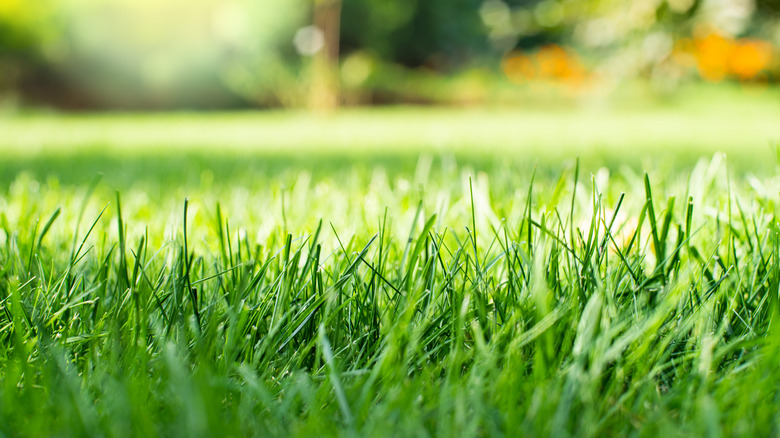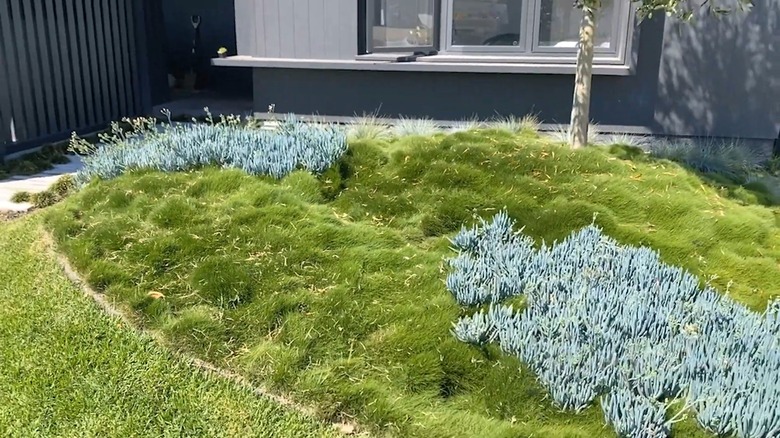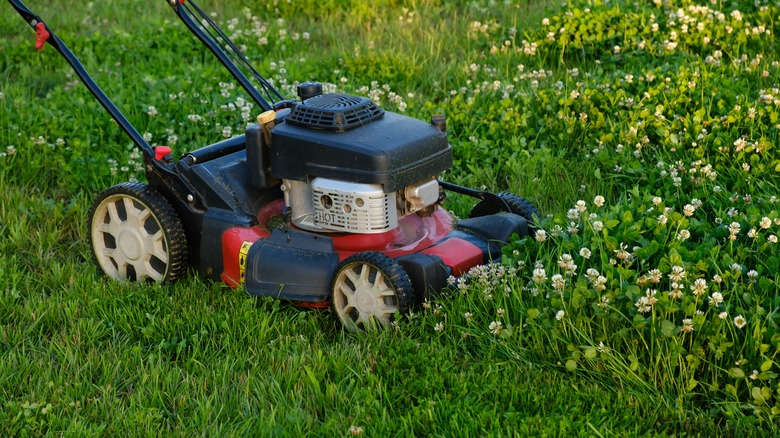The Downsides Of No-Mow Grass Seed (And Better Alternatives To Consider)
If you're someone who works hard to maintain your lawn each week of its active growing season, no-mow grass seed may sound like some sort of fever dream. Only in most lawncare aficionados' wildest fantasies would there ever be an option to plant grass that didn't regular require mowing. But guess what? No-mow grass seed does exist. They aren't exactly no-mow, however; most only require mowing a couple of times per year.
Does mowing twice each year sound a lot better than mowing weekly? Absolutely. Unfortunately, it isn't quite that simple. The types of grass sold as no-mow grass seed tend to be dense, slow-growing grasses that eventually grow taller, but simply falls over once it reaches a certain length. While this might not look unsightly the way most tall grasses do, it still poses the same downsides, including an increased likelihood of pests and major wear on your mower when you do mow. If you're thinking about planting no-mow grass seed, consider these downsides and alternatives before making the commitment.
Snake in the grass: the cons of no-mow grass seed
The grasses grown from no-mow grass seed may growly more slowly than traditional turf grass, but they don't necessarily remain short. Instead, these grasses grow very dense and then lay down when they reach a certain height, often forming rippling waves across your no-mow lawn that can resemble hair. While this can look rather unique and whimsical, it still carries all the same problems that come along with any other types of long grass in a lawn.
Keeping long grass near your house invites a host of pests to move in. You can expect to see an uptick in your yard's population of rodents, snakes, and all kinds of insects. Some of these insects — like fleas, ticks, mosquitos, and wasps — can be harmful to humans and pets. When you do mow your "no-mow" lawn, you can count on it being quite a struggle, both for you and for your lawn mower. These grasses and are so dense and long by the time they need mowing that it can be quite difficult to cut through them and then dispose of all the clippings.
Alternatives to no-mow grass seed for a low-maintenance lawn
Fortunately, there are ways to switch from typical turf grass to a no-mow or low-mow eco-friendly alternative that doesn't include embracing long grasses that can invite pests or wear out your lawn equipment. One such alternative is planting a clover lawn. While many people work hard to eliminate clover from their grass lawns, going with an all-clover lawn can actually naturally fertilize your soil and help to fight off weeds with its hardy root structure. Clover rarely needs to be mowed, feels soft underfoot, and attracts beneficial pollinators. As a downside for those who are allergic, those pollinators will include bees.
If a clover lawn isn't for you, other natural alternatives include wildflowers and moss. Wildflowers, of course, pose many of the same pros and cons as clover. However, wildflowers tend to grow much taller and will not provide the same grass-like carpet. A moss lawn instead of grass is an excellent no-mow alternative for those who live in shady conditions, but doesn't thrive well in sunny yards or hold up to heavy foot traffic. For a truly no-mow, pest-free lawn alternative, consider alternatives like gravel, sand, or mulch, which will reduce weeds and protect the soil. It's an especially good choice for those that live in areas prone to drought.


